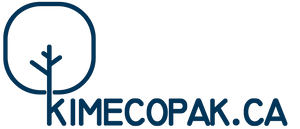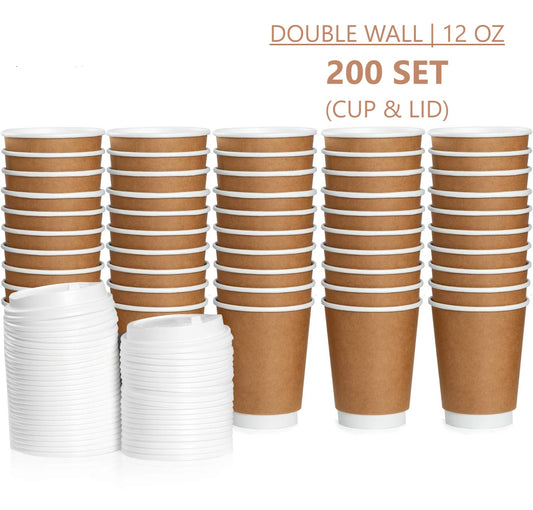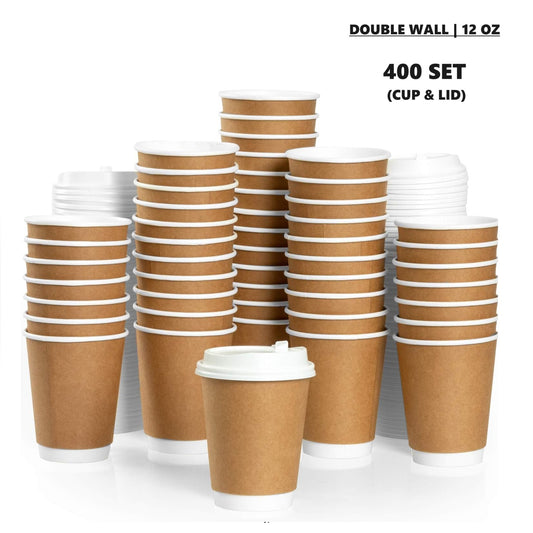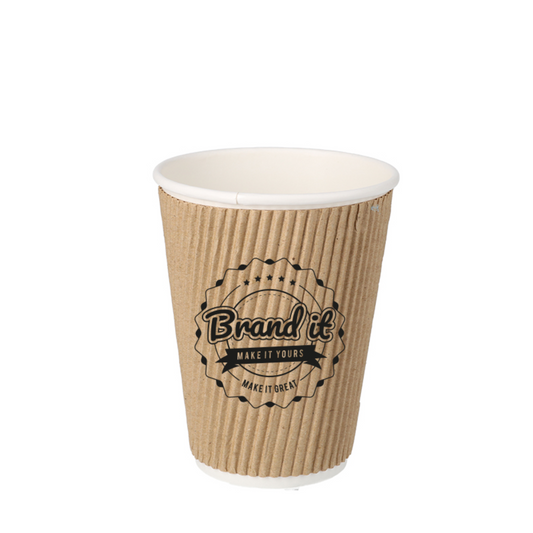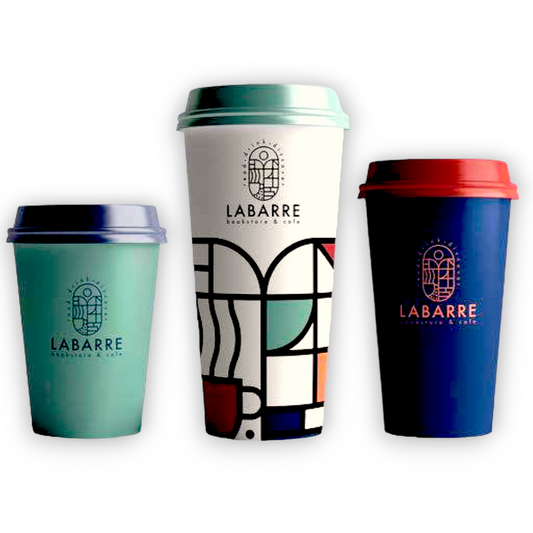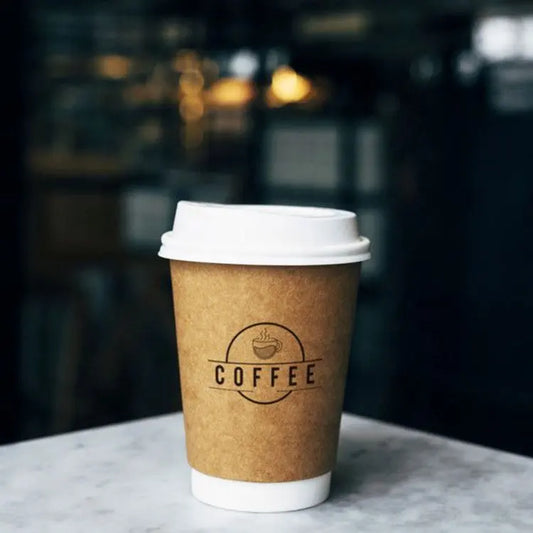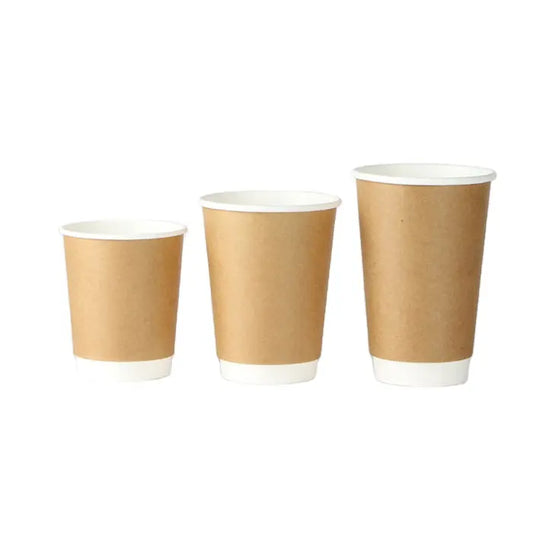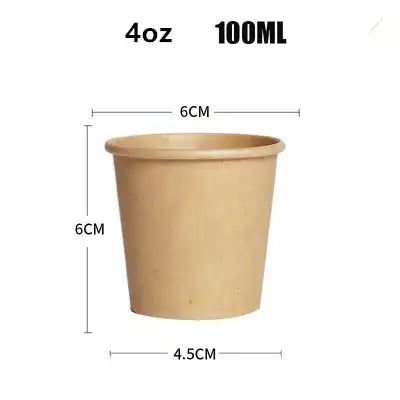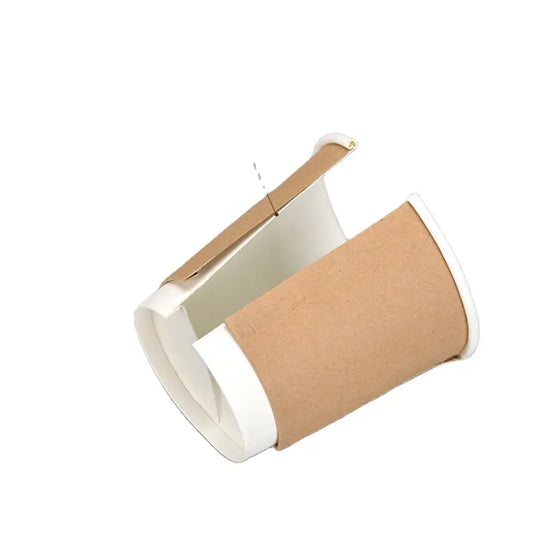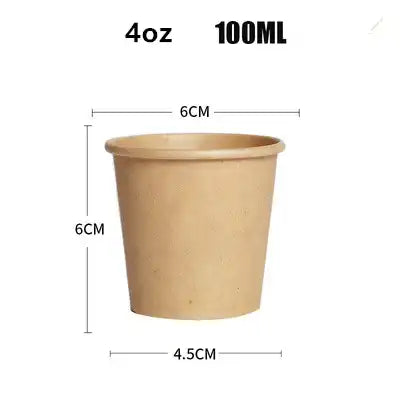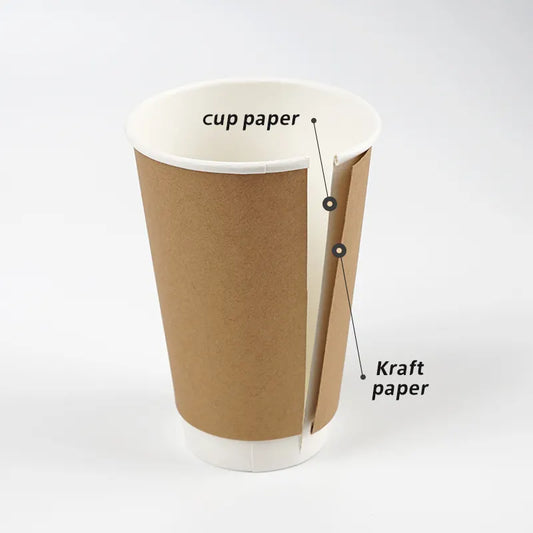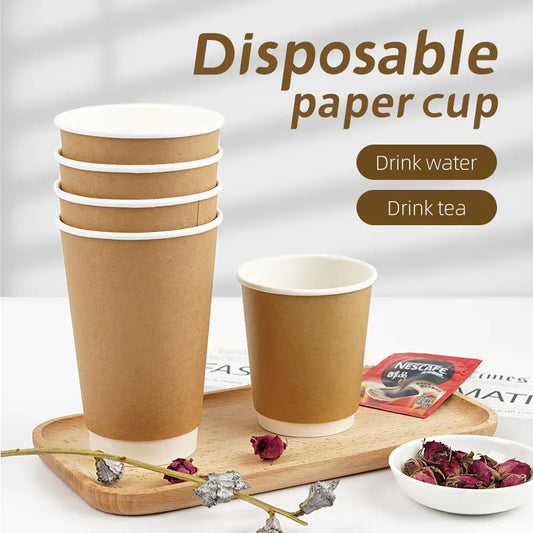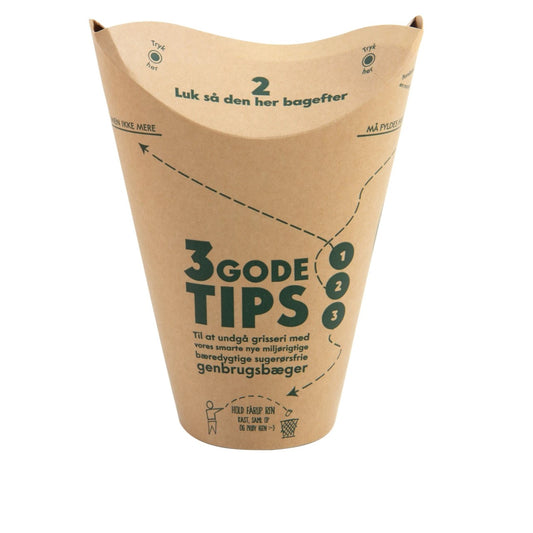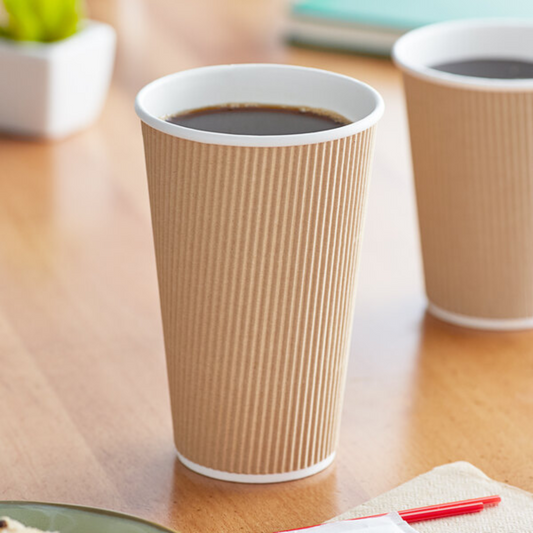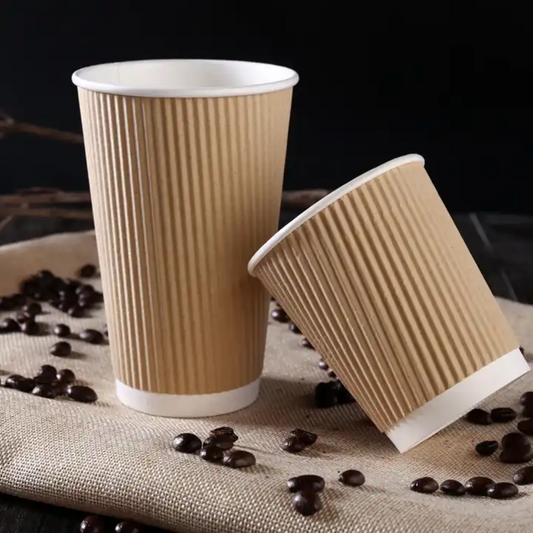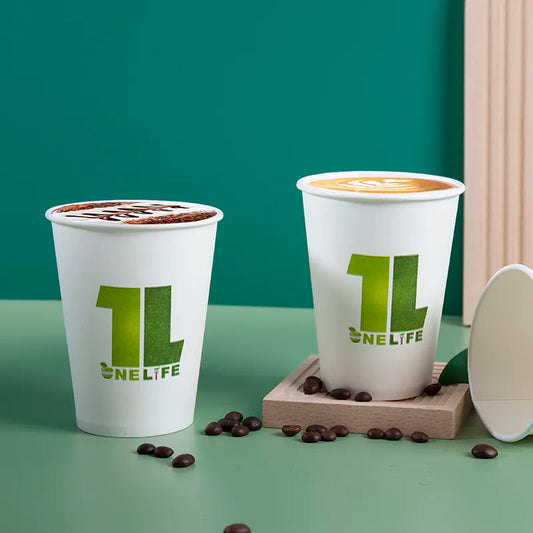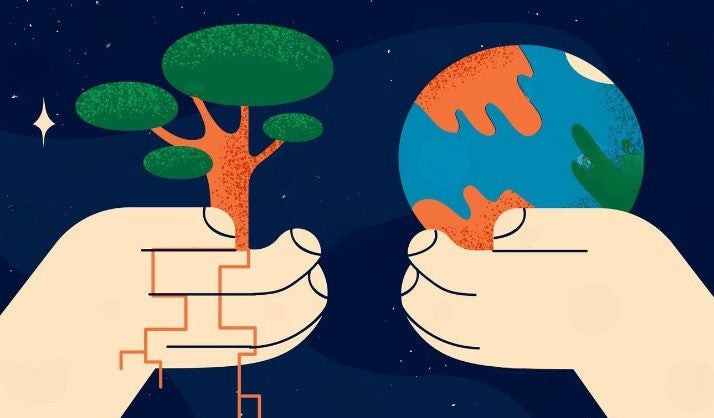-
Buy Double Wall Kraft Paper Hot Cup 12 Oz in Bulk Canada
Regular price $129.00 CADRegular priceUnit price per -
Custom Branded Disposable Ripple Wall Paper Hot Coffee Cup
Regular price $5,300.00 CADRegular priceUnit price per -
Custom Hot Coffee Cup | Sleeveless & Double Wall | Wholesale | Custom Logo
Regular price $2,500.00 CADRegular priceUnit price per -
Double Wall Kraft Paper Coffee Cups Full size
Regular price $129.00 CADRegular priceUnit price per -
Double Wall Kraft Paper Hot Cup 10 oz Sleeveless, Wholesale, Fast Delivery in Canada
Regular price $149.00 CADRegular priceUnit price per -
Double Wall Kraft Paper Hot Cup 4 oz - Wholesale in Canada
Regular price $129.00 CADRegular priceUnit price per -
Double Wall Kraft Paper Hot Cup 8 oz - Wholesale in Canada
Regular price $139.00 CADRegular priceUnit price per$159.00 CADSale price $139.00 CADSale -
Foldable Coffee Paper Cups Supply in Canada | Custom Logo
Regular price $9,501.00 CADRegular priceUnit price per -
Ripple Wall Kraft Paper Cup 16 oz
Regular price $108.00 CADRegular priceUnit price per -
Ripple Wall Kraft Paper Cup 8 oz
Regular price $98.00 CADRegular priceUnit price per -
Ripple Wall Kraft Paper Cup Supplier FullSize
Regular price $98.00 CADRegular priceUnit price per -
Single Wall Cup 12 Oz | Case of 1000
Regular price $149.00 CADRegular priceUnit price per -
Single Wall Cup 8oz | Case of 1000
Regular price $90.00 CADRegular priceUnit price per -
Single Wall Kraft Paper Cup 10 oz - Affordable, Wholesale in Canada
Regular price $129.00 CADRegular priceUnit price per$139.00 CADSale price $129.00 CADSale -
Single Wall White Paper Cup 16 oz - Affordable, Wholesale in Canada
Regular price $129.00 CADRegular priceUnit price per -
Water-based Coating Paper Cups Wholesale Supply with Custom Logo
Regular price $9,501.00 CADRegular priceUnit price per
TRANSFORM YOUR CUSTOMERS INTO A WALKING BILLBOARD FOR YOUR BIZ
+ RECEIVE $300 OFF FOR 1st CUSTOM LOGO/WHOLESALE ORDER(*)
Share with our experts on your Products, Sizes, and Quantities, and let's cook up a tailored solution that screams YOUR style.
Your vision, our expertise – let's make it pop! Talk to us!
To reduce single-use plastic waste, coffee businesses are progressively switching from plastic to paper cups. So, what kind of paper cup should you get, and where can you get it? Find out in our story below.
The most common features of paper cups used by coffee shops
Paper cup size
Paper cups come in sizes to fulfill client expectations and support a broad range of beverages. These are the most frequent basic coffee cup sizes:
- 8-ounce cups
- 12-ounce cups
- 16-ounce cups
- 20-ounce cups
Materials of paper cups
Paper cups are made of materials that are leak-proof and non-soggy. There are two major kinds:
- Traditional Paper Cups: Made of paperboard with a thin polyethylene (PE) covering on the interior to prevent leaks. Widely employed in a variety of settings.
- Eco-Friendly Paper Cups: Made from biodegradable or compostable materials such as PLA, these cups have a lower environmental impact.
The materials must meet requirements such as leak-proof coating and heat insulation to provide clients with a comfortable and convenient experience.
Customizable Branding
Many coffee shops imprint their logo, name, or branding components on paper cups. This personalization enhances the coffee shop's identity and increases brand recognition.
Types of paper cups
- Insulated Cups: These cups have two sides to provide more insulation, keeping hot beverages hot and cold beverages cold for extended periods. The outer layer is cold to the touch, making drinking more comfortable.
- Poly-coated Paper Cups: These cups contain a layer of polyethylene coating on the inside to provide a moisture barrier, making them perfect for serving both hot and cold beverages without leakage.
- Recycled Paper Cups: Made from recycled paper, these cups help to reduce waste and promote environmental sustainability, making them appealing to environmentally aware consumers.
- Wax-Coated Paper Cups: Wax-coated paper cups are frequently used to serve cold beverages such as soda and iced coffee. The wax coating repels water but is not suitable for hot liquids.
Benefits of using paper cups
Convenience and hygiene
Paper cups are a hygienic and simple way to serve hot beverages. They are disposable, so there is no need for washing, and the risk of cross-contamination is reduced. Their leak-proof lids prevent spills, making them great for takeaway orders or on-the-go consumption.
Environmental advantages over plastic cups
Paper cups, unlike plastic cups, are biodegradable and have a lesser environmental impact. They can be recycled or composted when properly disposed of, reducing their impact on landfill waste and ocean pollution.
How to choose the right paper cup?
The right paper cup for a business must match the functional and image requirements. Consider the following aspects when selecting the proper sort of paper cup for your business.
Paper cups shape
Consider the shape of the paper cups based on your specific requirements and the type of beverages you intend to provide. Paper cups exist in a variety of shapes.
- Cylindrical: This is the most common and commonly utilized shape. Cylindrical cups are versatile and can be used to serve a variety of beverages.
- Conical: These cups feature a somewhat pointed and conical form. Conical paper cups are intended for fast sips or cold beverages such as shaved ice and ice cream.
- Flower-shaped: These cups have a unique flower-like form that is typically used for special events, parties, or weddings where aesthetics and presentation are crucial.
- Tulip-shaped: These cups feature a tulip-shaped pattern with pleats or ruffles and are widely used for serving hot liquids such as coffee or tea. The pleats add insulation and make them pleasant to wear without sleeves.
Suitable paper cup size for menu
Determine the proper cup size based on the volume of liquid you intend to serve. Here are the most frequent paper cup sizes, as well as the beverages that are typically provided in each size:
|
Size |
Type of beverage |
|
4oz |
Espresso shots, Macchiato |
|
8oz |
Small black coffee (Americano) |
|
12oz |
Latte, Cappuccino, Mocha, Flat White, Hot tea |
|
16oz |
Iced coffee, Iced latte, Iced Mocha, Chai latte, Hot Chocolate |
In addition to the basic sizes, you can opt to expand the paper cup size to meet your products, such as 20oz, 24oz, or even 30oz and 32oz.
Material
Paper cups are made from several sorts of paper, each with its own set of traits and benefits. Paper cups are commonly made from the following types of paper:
- Single PE Coated Paper: A popular choice for disposable cups that is moisture resistant for both hot and cold beverages.
- Double PE Coated Paper: Provides improved insulation for hot beverages, eliminating the need for additional sleeves.
- PLA Coated Paper: A biodegradable and environmentally friendly alternative for serving cold beverages.
- PLA Lined Paper: Improved biodegradability on the inside, with polyethylene for water resistance on the exterior.
- Wax-coated Paper: Suitable for cold beverages, providing water resistance.
- Recycled Paper: reduces the demand for fresh raw materials and adds to waste reduction.
- Kraft Paper: Natural, brown appearance suitable for eco-conscious brands.
- Cardstock: Thicker and rigid paper, ideal for special or customized cups.
- Corrugated Cardboard: Provides excellent strength and rigidity.
Each type has its advantages, allowing your businesses to make appropriate and sustainable choices.
Heat resistant capability
Heat resistance is critical to ensuring customer safety and convenience when utilizing paper cups for hot beverages. Various strategies are frequently used by manufacturers to improve the heat resistance of paper cups. The following table compares the differences between each technique:
|
Heat-Resistant Capability Technique |
Advantages |
Disadvantages |
|
Double Wall Construction |
Additional insulation keeps drinks hot. The outer surface remains cool for comfortable holding. |
Increased material usage |
|
High-Quality Paper and Coating |
Can handle higher temperatures without deformation. Specialized coatings improve heat resistance. |
Higher cost for premium materials. May require specific coating suppliers. |
|
Thick Paperboard |
Better insulation and structural stability. Can withstand hot liquids without softening. |
Increased weight and bulkiness. Heat-Resistant Lamination
|
|
Heat-Resistant Lamination |
Prevents softening or deforming when exposed to heat. |
Additional manufacturing process. May require specific lamination |
|
Corrugated/Ripple Wall Design |
Provides extra insulation for better heat resistance Can handle hot beverages effectively. |
Limited aesthetic options for cups |
Leak resistant capability
Paper cups with leak resistance are critical for delivering beverages securely, especially when clients are on the go or the cups are susceptible to jostling during transportation.
The following table details the leak-resistant techniques employed by paper cup makers, as well as their benefits and drawbacks:
|
Leak-Resistant Techniques |
Advantages |
Disadvantages |
|
Coatings or Lamination |
Creates a waterproof barrier to prevent liquid penetration. Prevents leaks and spills when cups hold liquid. |
Inconsistent effectiveness if not well applied |
|
Reinforced Seams
|
Adds strength to the cup seams, reducing the risk of leaks. Provides more robust cups for improved leak resistance. |
Additional materials could raise costs. May require specific coating suppliers. |
|
Folded Bottoms |
Eliminate gaps or openings at the cup bottom. Ensures leak-proof construction for secure use. |
Requires precise folding during folding |
|
Leak-Proof Lids
|
Designed to fit tightly and securely, preventing spills. Ensures safe transportation and leak prevention. |
Additional cost for lid production. |
|
High-Quality Paper High-Quality Paper |
Thicker and higher-quality paperboard enhance stability. Offers better structural integrity for leak prevention
|
Limited effectiveness with thinner paper. |
Lid size for paper cups
Lids are essential accessories for paper cups with various types available:
- Flat Lids: Simple and domeless, suitable for cold beverages like iced coffee or smoothies.
- Dome Lids: Raised and dome-shaped to accommodate toppings, ideal for hot drinks like coffee.
- Sipper Lids: Feature a small opening for drinking on the go without lid removal.
These lids are commonly made from plastic materials like polypropylene or polystyrene, but eco-friendly options exist with biodegradable materials like PLA or biodegradable plastics.
Here is the table of common paper cup sizes and their corresponding lid sizes:
|
Paper Cup Size |
Lid size |
|
4oz |
62mm |
|
8oz |
80mm |
|
12oz |
80mm |
|
16oz |
90mm |
|
20oz |
90mm |
|
24oz |
100mm |
Food safety standards
In Canada, food safety standards for paper cups are overseen by the Canadian Food Inspection Agency (CFIA) and Health Canada. These regulations ensure that paper cups used for food and beverages are safe for consumers. Key aspects of food safety standards for paper cups in Canada include:
- Materials: Paper cups must use food-grade materials without harmful chemicals that could migrate into drinks.
- Coatings: Coatings or linings must be food-approved and pose no health risks.
- Migration Limits: Limits are set for substances that may transfer from the cup to food or beverages.
- BPA-Free: Paper cups in Canada are regulated to be free from bisphenol A (BPA).
- Health Canada Regulations: Health Canada sets guidelines for food contact materials, including paper cups.
- CFIA Oversight: The CFIA ensures compliance with food safety standards.
Custom logo
Don't neglect the personalized logo component while selecting the sort of paper cup for your business. You can choose brand logos or themed patterns on the paper cups if you require a logo for building your brand's image or for special events.
The customized logo process at KimEcopak takes generally 8-12 weeks and consists of only 5 easy steps: Choose the product, edit the logo, approve the logo, produce the cups, and get the order.
KimEcopak’s paper cups for coffee shops
At KimEcopak, we provide paper cups that meet all of your café's requirements:
- Size: We currently offer sizes 8oz, 12oz, 16oz, 20oz, and 24oz. Custom sizes can be ordered for smaller or bigger sizes.
- Material: Our paper cups are manufactured from kraft paper, cardstock, and corrugated cardboard to minimize environmental effects while providing a comfortable and sustainable feel.
- Heat and Leak Resistance: Our double-walled, sleeveless cups are ideal for both hot and cold fluids, providing exceptional heat and leak resistance.
- KimEcopak supports custom orders for both sizes and logos. The custom logo process takes about 8-12 weeks, saving the business both money and time. Furthermore, if your stock is not ready, we offer exclusive free storage at our warehouse for up to 30 days.
Where to buy high-quality paper cups
are available from a variety of vendors in Canada. You may also look into other reliable suppliers and distributors specializing in food service packaging to get a diverse assortment of high-quality paper cups that fulfill your coffee shop's needs while also aligning with your environmental aims.
KimEcopak provides environmentally friendly paper cups produced from renewable resources, resulting in an excellent environmental impact. We also provide customization options, which allow you to personalize the paper cups with your coffee shop's logo, branding, or any unique design components.
In conclusion, paper cups come in different sizes and materials. They are crucial for coffee shops since they provide convenience and eco-friendly solutions, such as those provided by KimEcopak. Customization options permit branding, making them an excellent alternative for organizations seeking functionality and sustainability.
